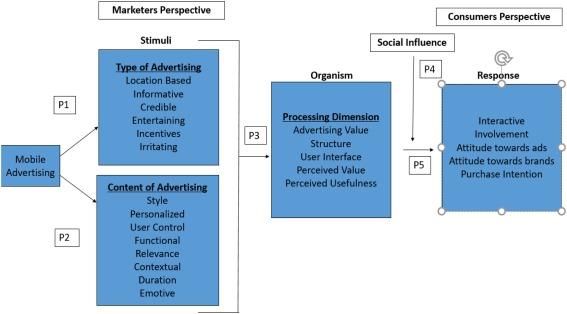10 Inspiring Case Studies: Successful Inclusion Strategies That Deliver Real Results
In today’s diverse and dynamic workplace, fostering inclusion is no longer optional—it’s essential. Successful inclusion strategies not only enhance employee well-being but also drive innovation, engagement, and business performance. in this article, we explore 10 inspiring case studies that showcase how organizations have implemented proven inclusion strategies to achieve tangible results. Whether you’re an HR leader, manager, or passionate about diversity and inclusion, these real-world examples will provide you with actionable insights and practical tips to create a more inclusive environment.
Benefits of Effective Inclusion Strategies
- increased employee satisfaction and retention
- Greater creativity and innovation through diverse perspectives
- Stronger employer brand that attracts top talent
- Improved decision-making and problem-solving skills
- Better financial performance and customer satisfaction
By analyzing successful inclusion strategies from leading organizations, you’ll learn how to harness these benefits for your own workplace.
table of Contents
- microsoft: empowering Neurodiversity in the Workplace
- Accenture: Embracing Gender Diversity Globally
- Procter & Gamble: Championing Inclusive Marketing
- EY: Building Cultural Competence in Leadership
- Salesforce: Fostering LGBTQ+ Inclusion
- AT&T: Supporting Veterans and Military Families
- SAP: Autism at Work Initiative
- Unilever: Addressing Unconscious Bias Through Training
- Kaiser Permanente: Culturally Responsive Healthcare
- TD Bank: Accessibility and Disability Inclusion
1. Microsoft: Empowering Neurodiversity in the Workplace
Strategy: Microsoft launched the Neurodiversity Hiring Program to attract, hire, and support candidates with autism and other neurodiverse conditions. The company introduced alternative interview processes, mentorship, and tailored onboarding.
- Outcome: Increased retention rates among neurodiverse employees.
- Business Impact: Improved innovation and productivity by leveraging neurodiverse talents.
“Neurodiversity is a strength, not a flaw. Our programs help us unlock potential we used to overlook.” – Microsoft HR Leader
2. accenture: Embracing Gender Diversity Globally
Strategy: Accenture set a goal to achieve a gender-balanced workforce by 2025. they implemented inclusive hiring practices, mentoring programs, and leadership development specifically for women.
- Outcome: Women now make up over 45% of Accenture’s employees worldwide.
- Business Impact: Diverse teams have delivered higher performance and fostered a more inclusive company culture.
3. procter & Gamble: Championing Inclusive Marketing
Strategy: P&G committed to representing diverse voices in its advertising.Through its “Widen The Screen” initiative, they partnered with multicultural creators and featured underrepresented communities in global campaigns.
- Outcome: Enhanced brand reputation and stronger connections with diverse consumers.
- Business Impact: Inclusive advertising has led to increased customer loyalty and sales growth.
4. EY: Building Cultural Competence in Leadership
Strategy: Professional services leader EY incorporated intercultural competency training for managers, forming diverse cross-functional teams and sponsoring Employee Resource Groups (ERGs) for various affinity groups.
- Outcome: Higher engagement scores and employee satisfaction.
- Business Impact: Ability to serve global clients more effectively and attract diverse talent.
5. Salesforce: Fostering LGBTQ+ inclusion
Strategy: Salesforce launched the Outforce network to support LGBTQ+ employees. They also offer pronoun education, inclusive benefits (like transgender healthcare coverage), and participate in international Pride celebrations.
- Outcome: salesforce is consistently rated as one of the most LGBTQ+ inclusive workplaces globally.
- Business Impact: Improved recruitment, employee retention, and innovation.
6. AT&T: Supporting Veterans and Military Families
Strategy: AT&T offers a dedicated Veterans Employee Resource Group, tailored career development, and supports military families with flexible work arrangements.
- Outcome: Employment of over 13,000 veterans as 2013.
- Business Impact: Veterans bring valuable leadership skills and reliability, enhancing company culture.
7. SAP: Autism at Work Initiative
Strategy: SAP’s groundbreaking Autism at Work program focuses on recruiting and integrating talents on the autism spectrum through specific training, accessible workplaces, and supportive networks.
- Outcome: Over 175 individuals with autism employed in more than 15 countries.
- Business Impact: Enhanced creativity,problem-solving,and employee morale.
8. Unilever: Addressing Unconscious Bias through Training
Strategy: Unilever rolled out mandatory unconscious bias training for all managers and launched interactive e-learning modules on recognizing and addressing bias in decision-making.
- Outcome: Improved fairness in promotion and recruitment processes.
- Business Impact: More diverse and equitable teams at all levels of the association.
9. kaiser Permanente: Culturally Responsive Healthcare
Strategy: Kaiser Permanente provides culturally competent care by employing staff from diverse backgrounds, utilizing language services, and offering training in understanding cultural health beliefs.
- Outcome: Improved patient health outcomes and satisfaction among diverse populations.
- Business Impact: Recognized as a leader in healthcare inclusion and equity.
10. TD Bank: Accessibility and Disability Inclusion
Strategy: TD Bank has prioritized digital accessibility, modified workplace environments, and created a Disability inclusion Leadership Council to foster participation at every level.
- Outcome: Better accessibility for both customers and employees, and recognition as a top disability-friendly employer.
- Business Impact: Broader customer base and improved employee engagement scores.
Practical tips for Implementing Successful Inclusion Strategies
- Assess your workplace culture: Conduct surveys and focus groups to identify areas for improvement.
- Set measurable goals: Use data to benchmark progress in diversity and inclusion initiatives.
- Offer continuous training: Provide ongoing education on unconscious bias, cultural competence, and inclusive leadership.
- Foster Employee Resource Groups (ERGs): Support employees from different backgrounds with formal networks and communities.
- Promote inclusive leadership: Ensure managers are trained and accountable for building diverse teams.
Conclusion: building Inclusive Workplaces for Real Results
the positive impact of effective inclusion strategies is clear from these inspiring case studies. From higher retention to enhanced brand reputation and business growth, organizations across industries have demonstrated that diversity and inclusion are key drivers of success. start leveraging these lessons today—commit to actionable strategies, support leadership development, and embrace continuous improvement. Not only will you create a more inclusive workplace, you’ll also unlock new heights of productivity, innovation, and employee satisfaction.
Interested in learning more? Explore our other resources and discover how you can build a truly inclusive organization.

